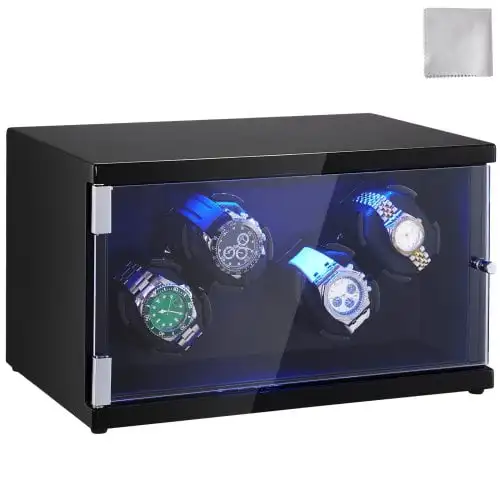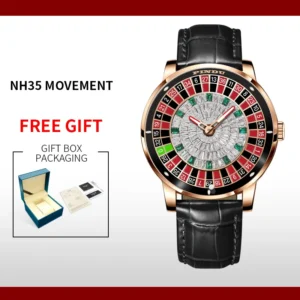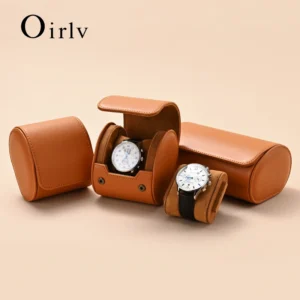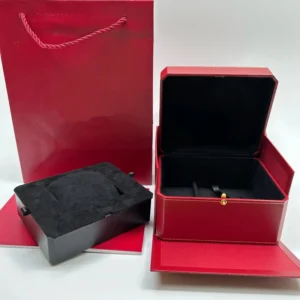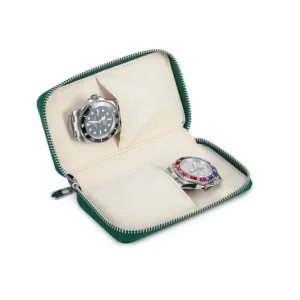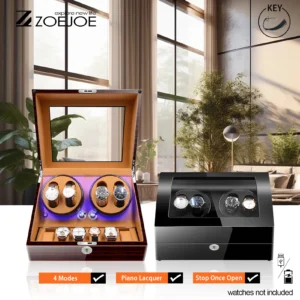Understanding Why Proper Watch Storage Matters
A fine watch is more than just a timekeeping device—it’s an investment, often with both financial and sentimental value. Whether you own a single luxury timepiece or a growing collection, how you store your watches when they’re not on your wrist can dramatically impact their longevity, performance, and value retention.
Improper storage can lead to a host of problems that compromise both the mechanical integrity and aesthetic appeal of your timepieces. When watches are carelessly tossed into drawers or left exposed on nightstands, they become vulnerable to scratches, dust accumulation, and moisture damage. For mechanical watches, extended periods of inactivity without proper care can cause lubricants to solidify, potentially leading to significant mechanical failures when you decide to wear them again.
Many watch enthusiasts don’t realize that environmental factors like humidity, temperature fluctuations, and even sunlight exposure can gradually deteriorate their timepieces. The consequences of neglectful storage practices often don’t become apparent until significant damage has occurred—by which time repairs might be costly or components irreplaceable.
Proper watch collection storage planning involves addressing several critical factors:
- Protection against physical damage (scratches, impacts, dust)
- Control of environmental conditions (humidity, temperature, light)
- Maintenance of mechanical health (particularly for automatic watches)
- Security against theft or loss
- Preservation of aesthetic appearance and material integrity
Environmental Controls for Optimal Watch Preservation
Creating the right environment for your watches is fundamental to their preservation. Watches are precision instruments with components sensitive to various environmental factors that can silently damage them over time.
Temperature Considerations:
The ideal temperature range for watch storage is 60-70°F (15-21°C). Extreme heat can cause lubricants to thin and potentially leak or evaporate, while excessive cold might make them viscous, impacting the watch’s accuracy. Temperature fluctuations are particularly problematic as they can cause materials to expand and contract, potentially allowing moisture to enter the case.
Humidity Management:
Maintaining humidity between 40-60% is crucial for proper watch preservation. Excessive moisture in the air is perhaps the greatest environmental threat to watches, potentially causing:
* Condensation inside the watch case
* Corrosion of metal components
* Mold growth on leather straps
* Deterioration of luminous dial materials
Conversely, environments that are too dry can cause leather straps to crack and certain gaskets to become brittle over time.
Light Exposure:
Direct sunlight and strong UV exposure should be avoided as they can fade dials, discolor certain materials, and deteriorate lubricants. This is especially important for vintage pieces with original dials that could suffer irreversible damage.
Magnetic Field Protection:
Modern life surrounds us with magnetic fields from electronics, which can severely affect the accuracy of mechanical watches. Common sources include:
* Speakers and audio equipment
* Refrigerator magnets
* Tablet and laptop magnetic covers
* Certain smartphone cases
For collectors with automatic timepieces, specialized watch winders offer environmental protection while keeping the movement active. These devices maintain proper humidity and protect from dust while keeping automatic watches wound through gentle, intermittent rotation.
Essential Physical Protection Strategies
Beyond environmental controls, physical protection is vital for preserving your watches’ condition and appearance. Physical damage from improper storage accounts for many of the most common issues watch owners face.
Individual compartments are essential when storing multiple watches together. Direct contact between watches almost inevitably leads to scratches, as even the softer metals used in watch cases can mark each other when shifted during handling or movement. For optimal protection, watches should be stored with at least 0.4 inches (1 cm) of separation or in dedicated individual compartments.
The positioning of your watch in storage matters significantly. Storing watches face-up (dial up) provides the best protection for the crystal and bezel, which are often the most visible and expensive parts to repair. This position also minimizes stress on the case and bracelet or strap. If space constraints require alternative positioning, storing with the crown facing up is preferable to laying the watch on its crown, which can cause crown damage and potential moisture ingress.
Materials that come into contact with your watch should be soft and non-abrasive. High-quality watch pillows made from microfiber, velvet, or soft foam provide ideal support while preventing scratches. These materials not only protect the case back from abrasion but also help absorb any moisture that might be present.
Different watch types may require specific storage considerations:
- Dive watches with rubber straps benefit from storage that prevents the strap from developing permanent bends
- Vintage watches often need extra cushioning due to potentially fragile crystals or cases
- Watches with deployant clasps should be stored carefully to prevent the clasp mechanism from pressing against other surfaces
Watch collectors often overlook the importance of stability in storage. A secure watch box that doesn’t shift or move prevents watches from jostling inside, which can cause bracelet scratches or potential crystal impacts even within padded compartments.
Maintaining Automatic Watch Health During Storage
Automatic (self-winding) watches present unique storage challenges compared to their quartz counterparts. These mechanical marvels rely on regular movement to maintain both accuracy and internal component health.
When an automatic watch sits unworn for extended periods, several issues can develop:
* Movement lubricants can settle and harden in place
* Power reserve depletes, causing the watch to stop
* Internal components remain in fixed positions, potentially creating wear points
* The calendar functions may become more difficult to reset after long inactivity
Watch winders serve a critical purpose in addressing these concerns. These devices gently rotate watches at programmed intervals, mimicking the natural motion of wearing the timepiece on your wrist. Contrary to common misconceptions, proper use of watch winders with appropriate TPD settings will not cause excessive wear to the movement.
When selecting from available automatic watch winder options, consider these key factors:
* Adjustable rotation settings to match your specific watch’s requirements
* Quiet operation for bedroom placement
* Power options (battery vs. AC adapter)
* Single vs. multi-watch capacity
* Additional storage features for unworn pieces
For collectors without winders, periodic manual winding is an alternative approach. Even for unworn watches, winding the movement once every 1-2 months helps redistribute lubricants and prevent them from hardening in place. For manual watches, approximately 20-30 crown turns every few weeks will keep the movement in better condition than allowing it to remain completely dormant.
Security Measures for Valuable Timepieces
As watch collections grow in value, security becomes increasingly important. Whether you own a single luxury timepiece or dozens of collectible watches, protecting your investment from theft requires thoughtful planning.
Home safes offer a practical balance between security and accessibility for most collectors. When selecting a safe for watches, consider these features:
* Fire rating appropriate for your climate and home construction
* Proper bolt-down capabilities to prevent theft of the entire safe
* Interior organization options that won’t damage watches
* Humidity control features (built-in or aftermarket additions)
* Appropriate size for your current and future collection
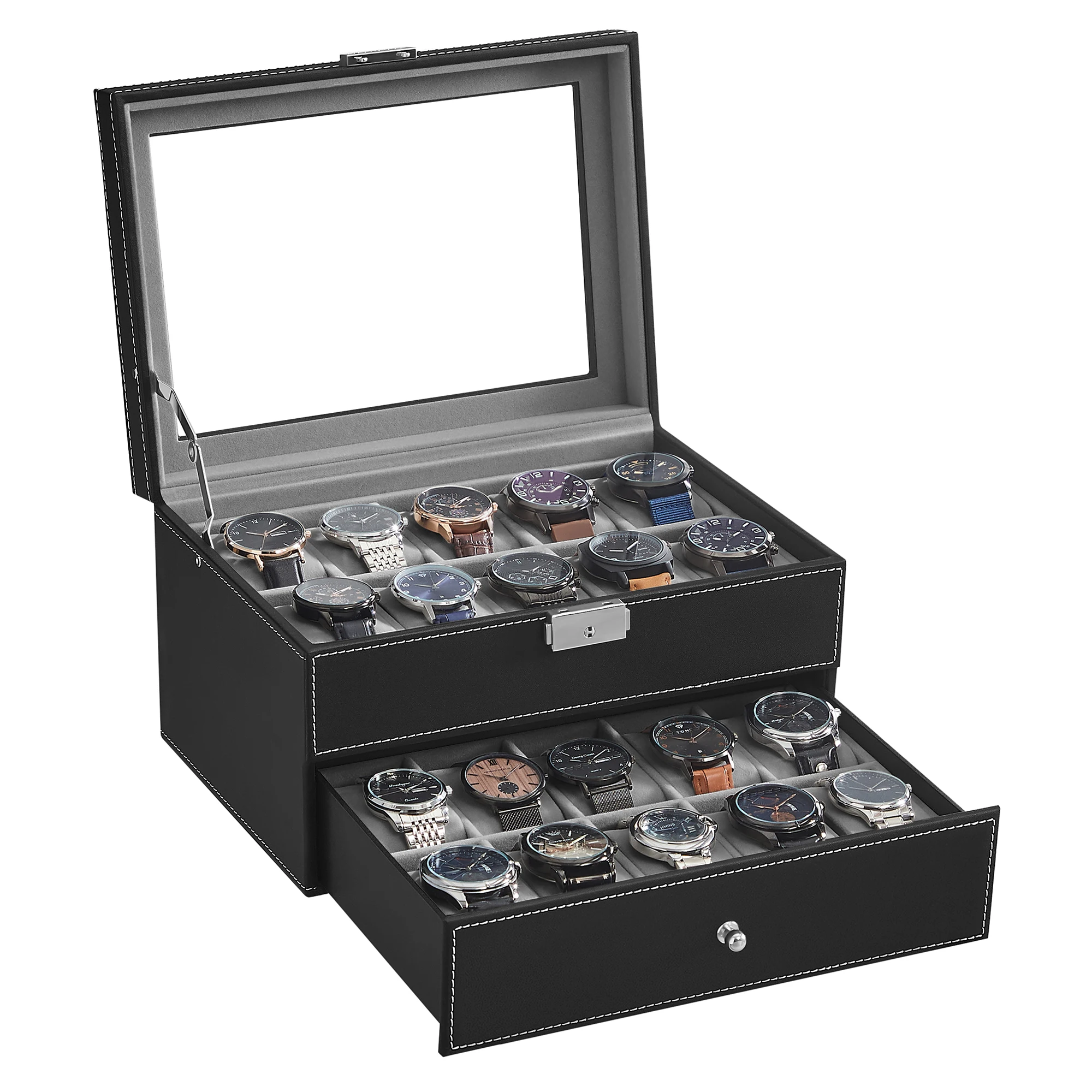
Bank safety deposit boxes provide maximum security but with limited accessibility. This option works well for extremely valuable pieces worn only on special occasions or investment-grade watches held long-term. The trade-off is inconvenience—you’ll need to visit the bank during business hours to access your watches.
Regardless of your storage location, proper documentation is essential for insurance purposes. For each valuable timepiece:
* Take clear photographs of the watch from multiple angles
* Record serial numbers and unique identifying features
* Keep purchase receipts and service records
* Store this documentation separately from the watches themselves
* Consider specialized watch insurance beyond standard homeowner’s policies
For everyday security, establish consistent habits around where and how you remove your watch. Many watches are stolen or lost during routine activities when temporarily removed for exercise, showering, or sleep.
Premium Watch Storage Solutions Compared
With an understanding of environmental, physical, and security requirements for proper watch storage, let’s explore the range of storage solutions available to collectors at different stages.
Watch Boxes and Cases
Watch boxes remain the most versatile and common storage solution, offering dedicated compartments with protective materials. Quality watch boxes feature:
* Soft, non-abrasive lining materials (microfiber, velvet, suede)
* Sturdy construction that won’t warp or degrade
* Properly sized compartments that secure watches without crowding
* Lids or covers that protect against dust and light
* Aesthetic design that complements home decor
The best watch boxes combine protection with presentation, allowing you to both admire and preserve your collection. Options range from simple five-piece cases to elaborate display cabinets holding dozens of timepieces.
Watch Winders
As previously discussed, winders serve both functional and protective purposes for automatic watches. Modern winders range from single-watch units to elaborate custom cabinets that combine winding positions with additional storage.
Travel Storage Solutions
Watch travel presents unique risks requiring specialized solutions. Travel cases offer compact protection through:
* Crush-resistant exterior shells
* Secure watch anchoring to prevent movement
* Discreet designs that don’t advertise valuable contents
* TSA-compatible locking mechanisms for air travel
Watch rolls provide a more compact alternative for short trips, using soft materials rolled around cushioned sections to protect watches without rigid exteriors.

Comparative Analysis of Storage Options
| Storage Type | Best For | Pros | Cons |
|---|---|---|---|
| Watch Box | General collection storage | Protection, organization, display | Limited environmental control |
| Watch Winder | Automatic watches | Keeps movements active, display | Requires power, potential for over-winding |
| Watch Roll | Travel, small collections | Compact, portable | Limited capacity, less rigid protection |
| Home Safe | Valuable collections | Maximum security, fire protection | Cost, less display potential, space requirements |
| Valet Tray | Daily wear rotation | Convenience, quick access | Limited protection, no environmental controls |
Luxury Watch Boxes, Men's Watch Boxes, Single Watch Box
Price range: $903.35 through $980.97 Select options This product has multiple variants. The options may be chosen on the product pageSingle Watch Travel Case, Watch and Jewelry Box, Watch Roll Travel Case
Price range: $93.44 through $140.65 Select options This product has multiple variants. The options may be chosen on the product pageAutomatic Watch Winder, Luxury Watch Winder, Single Watch Box
$307.39 Select options This product has multiple variants. The options may be chosen on the product pageLuxury Watch Boxes, Luxury Watch Travel Case
Price range: $200.33 through $224.57 Select options This product has multiple variants. The options may be chosen on the product pageLeather Watch Travel Case, Men's Watch Travel Case, Watch Roll Travel Case
Price range: $91.37 through $92.63 Select options This product has multiple variants. The options may be chosen on the product page4 Watch Winder, 6 Watch Box, Automatic Watch Winder
$512.31 Select options This product has multiple variants. The options may be chosen on the product page
Selecting the right storage solution depends on your collection size, the types of watches you own, your wearing patterns, and your budget. Many collectors employ multiple solutions—a winder for frequently worn automatic pieces, a display box for the regular rotation, and more secure options for valuable or rarely worn timepieces.
Best Practices for Daily Handling and Storage
Even with the perfect storage system, how you handle your watches before placing them in storage significantly impacts their long-term condition. These daily practices help prevent damage and maintain your timepieces’ appearance:
Clean before storing: Always wipe down watches with a clean, soft microfiber cloth before storage to remove oils, sweat, and environmental contaminants that can corrode surfaces over time.
Handle by the bracelet/strap: When possible, avoid touching the watch case, crystal, or bezel with your fingers, as natural oils can leave prints that attract dust and potentially damage certain finishes.
Allow diving watches to dry completely: If you’ve worn a water-resistant watch while swimming or in the shower, ensure it’s completely dry before storage to prevent trapped moisture.
Close clasps and buckles: Secure bracelets and straps before storage to maintain their shape and prevent accidental catches on other watches or storage materials.
Check for loose components: Before storage, verify that bezels, crowns, and pushers are secure and properly positioned to prevent damage while in the box or case.
The importance of developing watch storage ideas for collectors that work with your daily habits cannot be overstated. The perfect system on paper becomes useless if it’s too inconvenient to use consistently.
Material-specific considerations also play an important role:
* Leather straps benefit from occasional conditioning and need air circulation to prevent mold
* Metal bracelets should be cleaned regularly to remove buildup in links and clasps
* Rubber and silicone straps should be rinsed after exposure to saltwater or chemicals
Regular assessment of your stored watches—even those not in rotation—helps catch potential issues before they become serious problems. A monthly inspection of all stored timepieces can identify early signs of corrosion, strap deterioration, or moisture intrusion.
Tailored Storage Approaches for Different Collectors
The optimal storage approach varies significantly based on collection size, watch types, and wearing patterns. Here’s how different collectors might approach watch storage:
Beginner Collector (1-3 watches)
For those just starting their collection, focus on quality over quantity with storage solutions:
* A small but well-made watch box with 3-5 positions allows room for growth
* Individual watch pouches for travel or drawer storage provide flexibility
* A valet tray for the currently worn watch ensures it has a dedicated place when removed
Mid-Size Collection (4-10 watches)
As collections grow, organization becomes increasingly important:
* A primary watch box with 10-12 positions accommodates the full collection
* Consider adding a 2-4 position winder for favorite automatic pieces
* Implement a rotation system that ensures all watches receive wear time
* Begin more formal record-keeping of the collection
Organizing your watch collection becomes more crucial at this stage, as patterns of wear and storage needs become clearer.
Serious Collector (10+ watches)
Comprehensive systems are essential for larger collections:
* Multiple storage solutions for different categories (dress, sport, vintage, etc.)
* Custom or modular storage that can expand with the collection
* Professional-grade security measures
* Environmental monitoring tools (hygrometers, etc.)
* Detailed inventory and condition reporting
For all collectors, but especially those with valuable pieces, storage locations should consider both accessibility and security. The watches in regular rotation need convenient access, while valuable or rarely worn pieces might be better kept in more secure, less accessible storage.
Should You Use Original Watch Boxes for Long-term Storage?
Watch enthusiasts often face a dilemma regarding manufacturer’s original boxes: they’re valuable for resale purposes but frequently sub-optimal for actual storage.
Original packaging typically offers these benefits:
* Increases resale value (sometimes significantly for luxury or limited-edition watches)
* Provides authenticity confirmation
* Contains specific instruction materials and warranty information
* Often features brand-specific presentation elements
However, manufacturer boxes usually present several drawbacks for practical long-term storage:
* Bulky external dimensions compared to storage capacity
* Often lack proper cushioning or watch securing mechanisms
* Rarely feature humidity control or optimal materials
* Generally not designed for easy access or regular use
* Take up significant space when storing multiple watches
A practical compromise for many collectors involves:
* Keeping original boxes, papers, and accessories in separate archival storage
* Using dedicated watch storage solutions for the timepieces themselves
* Maintaining detailed records connecting watches to their original packaging
* Reuniting watches with original packaging only when needed for service or sales
For long-term watch storage protection, specialized storage solutions almost always outperform manufacturer packaging, while still maintaining the value-adding benefits of having the original boxes preserved separately.
Can Improper Storage Void Your Watch Warranty?
While manufacturers rarely explicitly mention storage conditions in warranty documents, improper storage can indeed lead to damage that voids warranty coverage. Understanding these boundaries helps protect both your watch and your warranty rights.
Most watch warranties specifically exclude:
* Water damage not related to manufacturing defects in water resistance
* Physical damage from impacts, drops, or crushing
* Damage from extreme environmental conditions
* Issues caused by improper care or negligence
Signs of improper storage that service centers can identify include:
* Corrosion patterns indicating long-term moisture exposure
* Lubricant breakdown inconsistent with normal wear
* Impact damage characteristic of unsecured storage
* Mold or material degradation from extreme humidity
To maintain warranty validity during storage periods:
* Follow any manufacturer-specific storage guidelines provided
* Keep records of service history and storage conditions
* Use appropriate storage solutions that protect against excluded damage types
* Consider more frequent service intervals for watches in long-term storage
When sending watches for warranty service, avoid mentioning storage methods unless specifically asked, focusing instead on the functional issues requiring repair.
How to Protect Watches While Traveling
Travel introduces unique risks to watches, combining potential environmental changes with increased handling and security concerns. Proper travel storage requires balancing protection with practicality.
For frequent travelers with multiple watches, dedicated safe ways to carry watches during travel include specialized solutions like:
- Hard-shell travel cases with foam or cushioned interiors that prevent movement
- Watch rolls that secure timepieces individually while maintaining a compact profile
- Combination solutions that offer both daily storage at your destination and secure transit protection
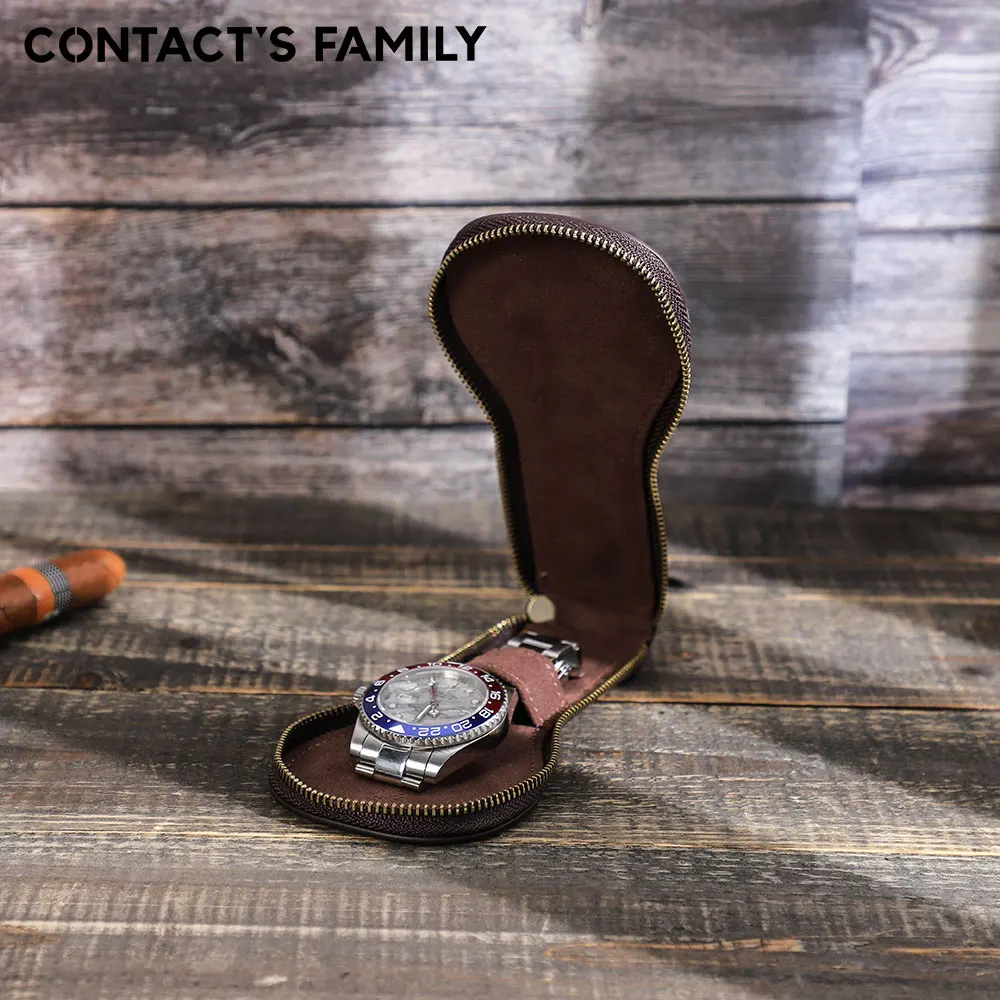
When selecting watch travel cases, consider these factors:
* Security features (locks, discreet design)
* Protection level (rigid vs. soft-sided)
* Size and weight constraints for your typical travel
* Number of watches you typically bring
Hotel security practices should include:
* Using in-room safes for short absences, but with caution regarding their limitations
* For valuable collections, considering portable travel safes with cable locks
* Never leaving watches visible in hotel rooms
* Maintaining possession of particularly valuable pieces rather than leaving them behind
For air travel, keep watches in carry-on luggage rather than checked bags, preferably worn or in a compact travel case within your personal item. This approach protects against both rough handling and potential theft while ensuring your timepieces remain within your control throughout your journey.
By implementing these comprehensive storage strategies—from environmental controls and physical protection to specialized solutions for different scenarios—you can ensure your watches remain in excellent condition for years to come, preserving both their function and their value for future enjoyment.

